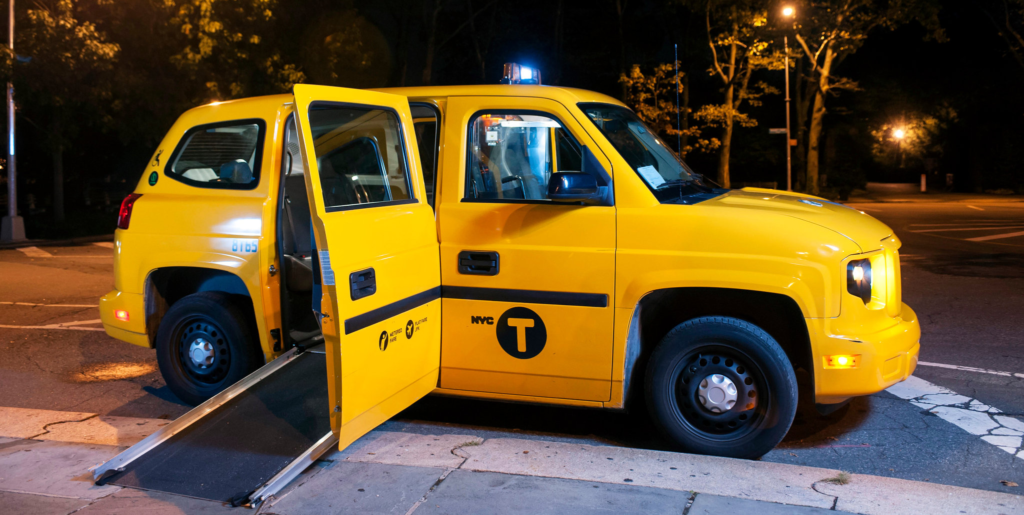Access to transportation is a vital part of daily life, allowing individuals to work, attend medical appointments, socialize, and engage in essential activities. For people with disabilities, particularly those who rely on wheelchairs, accessing traditional modes of 復康的士 transportation can often be a challenge. Wheelchair-friendly taxis are designed to address this gap, providing a reliable and safe transportation option that ensures individuals with mobility impairments can travel with ease and dignity. This article explores the importance of wheelchair-friendly taxis, the benefits they offer, and the steps necessary to make transportation more inclusive and accessible.

The most significant benefit of wheelchair-friendly taxis is that they offer people with mobility challenges the independence to travel without restrictions. Traditional taxis are typically not equipped to accommodate wheelchairs, meaning that individuals must either transfer to a seat or rely on other forms of assistance, which can be inconvenient, uncomfortable, and sometimes unsafe. Wheelchair-friendly taxis, however, are specifically designed with ramps or lifts that enable passengers to board and disembark without leaving their wheelchair. This feature ensures that wheelchair users can maintain their independence while traveling to work, appointments, or social events, significantly improving their quality of life and enabling them to live more freely.
Beyond independence, wheelchair-friendly taxis help ensure that individuals with disabilities have equal access to transportation, promoting inclusivity in society. In many urban areas, public transportation systems may have limited accessibility, and in rural or suburban locations, options are even fewer. For individuals with mobility challenges, this lack of accessible transportation can create barriers to education, employment, and social participation. By providing wheelchair-friendly taxis, cities and taxi services ensure that individuals with disabilities can move around their communities just like everyone else, helping to remove social isolation and ensure they have the same access to opportunities as non-disabled individuals. These taxis are an important part of a broader effort to create a more inclusive society where everyone, regardless of ability, can fully participate in public life.
Safety is another critical consideration when it comes to wheelchair-friendly taxis. Traditional taxis are not equipped to secure wheelchairs during transport, leaving passengers at risk of injury if the wheelchair shifts or becomes unstable during the ride. Wheelchair-friendly taxis are equipped with securement systems, such as tie-downs or locking mechanisms, that keep the wheelchair in place throughout the ride. This ensures that the passenger remains safe, preventing any movement that could result in discomfort or injury. Additionally, the design of the vehicles takes into account the space and layout required to accommodate both the wheelchair and the passenger comfortably, ensuring a smooth and secure journey. These safety features are essential in making wheelchair-friendly taxis a reliable and safe option for those who depend on them.
Despite the many advantages, there are challenges in ensuring the availability and accessibility of wheelchair-friendly taxis. In many cities, the number of accessible taxis is limited, and the availability may not always meet demand. This can be particularly problematic during peak hours or in areas with fewer taxi services. To address this, taxi companies should increase their fleet of accessible vehicles and ensure that these taxis are available across various locations. Additionally, drivers need to be trained in how to assist passengers who use wheelchairs and how to operate the vehicle’s lift and securement system properly. This training is essential to ensure a smooth and respectful experience for passengers. By expanding the availability of wheelchair-friendly taxis and improving driver training, we can make transportation more accessible for all.
In conclusion, wheelchair-friendly taxis are essential for providing individuals with mobility impairments the opportunity to travel independently and safely. They are a critical part of ensuring equal access to transportation, promoting inclusivity, and improving the quality of life for people with disabilities. With appropriate safety features, reliable availability, and well-trained drivers, wheelchair-friendly taxis offer a solution to the transportation challenges faced by those with mobility limitations. As cities and taxi companies continue to invest in accessible transportation options, the goal of creating a more inclusive and accessible society becomes increasingly achievable. Ultimately, wheelchair-friendly taxis play a vital role in fostering independence and ensuring that everyone has the freedom to move within their community.